
Toyota will fully model change the new Prius and release the fifth generation on January 10, 2023. The old model went on sale on December 9, 2015, andwill be a full model change in seven years .
ADVERTISEMENT
ADVERTISEMENT
- About the new Prius 5th generation
- About the new Prius 5th generation exterior
- About the new Prius 5th generation body color (all 8 colors)
- About the new Prius 5th generation interior
- New Prius 5th generation installed engine
- About the new Prius 5th generation next generation Toyota Safety Sense
- 2nd generation next generation Toyota Safety Sense feature comparison
- New Prius 5th generation price grade
- What I think about the new Prius 5th generation
- About the 4th generation Prius 50 series first half
- 4th generation Prius 50 series First adoption of early TNGA (Toyota New Global Architecture)
- About the hybrid system of the 4th generation Prius 50 series early model
- About the size of the 4th generation Prius 50 series first half
- 4th generation Prius 50 series early model 9 colors in total
- 4th generation Prius 50 series early price grade
- Tax benefits for 50-inch Prius
- 4th generation Prius 50 series first half November 2017 partially improved
- 4th generation Prius minor change model 50 series late model
- 4th generation Prius minor change model 50 series late exterior changes
- 4th generation Prius minor change model 50 series late interior changes
- 4th generation Prius minor change model 50 series late grade price information
- 4th generation Prius minor change model 50 series late specs
About the new Prius 5th generation
Adopts the body shape of the now traditional One Motion style 5 door hatchback Adopts the body shape of the now traditional One Motion style 5 door hatchback, Adopts the 2nd generation TNGA platform Lower center of gravity. More stylish proportions thanks to the adoption of 19-inch large diameter tires. The 5th generation hybrid system uses a series parallel hybrid with a reduction mechanism that combines a 2ZR-FXE inline 4-cylinder DOHC 1.8L engine with a motor . Furthermore, the higher grade model uses a 2.0L straight-4 DOHC “M20A-FXS” + motor to achieve both driving performance and fuel efficiency. It uses the next-generation Toyota Safety Sense, which can detect bicycles during the day and pedestrians at night. The Prius, which is one of Toyota’s first models to introduce advanced technology, is the fifth generation new Prius, and in addition to the previous models’ hybrid and PHEV (plug-in hybrid) models, the lineup includes an EV model . (The new Prius PHEV will be released in March 2023.)
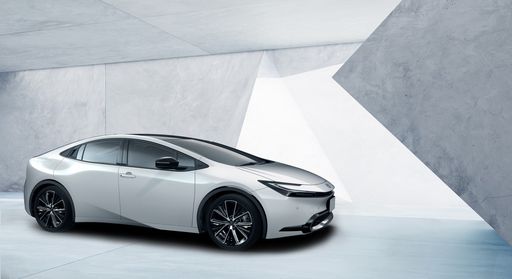
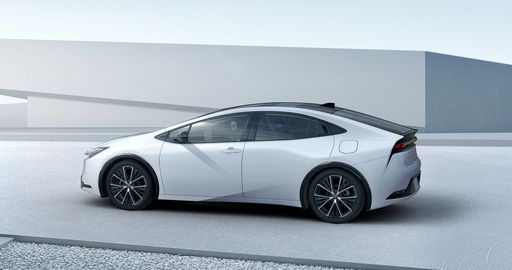
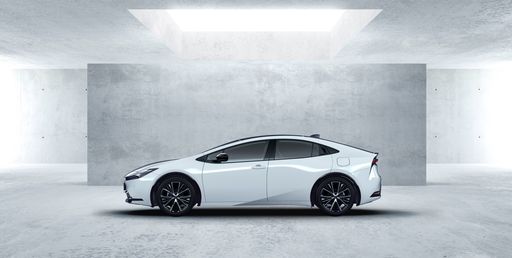
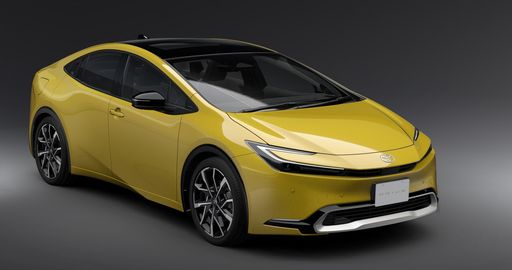
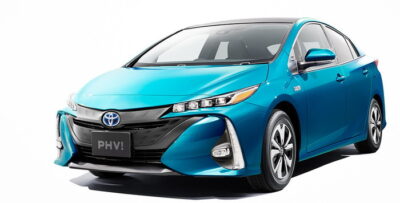
ADVERTISEMENT
ADVERTISEMENT
About the new Prius 5th generation exterior
The front design features a hammerhead motif that combines functionality and design at a high level, and a full model change includes a large U-shaped DRL (daytime running light) signature lamp . It is likely that “Bi-Beam LED headlights + LED turn lamps + LED clearance lamps” and “LED fog lamps” will be adopted as standard headlights . The rear adopts a complete horizontal taillight. Toyota vehicles also use horizontal single-character taillights, which are similar to the Harrier and Crown. It has been reborn with a lower center of gravity and stylish proportions while inheriting the Prius’ unique icon, the monoform silhouette. The simple yet expressive body design expresses “emotion that resonates with the senses” and “universal beauty” that will be loved for a long time.

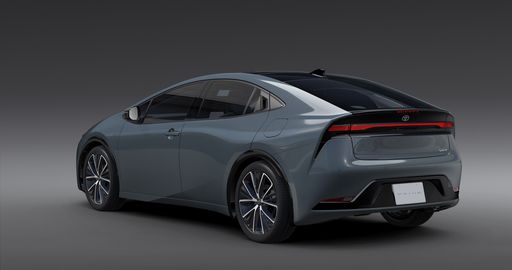
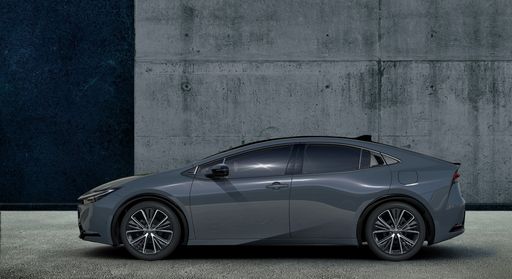


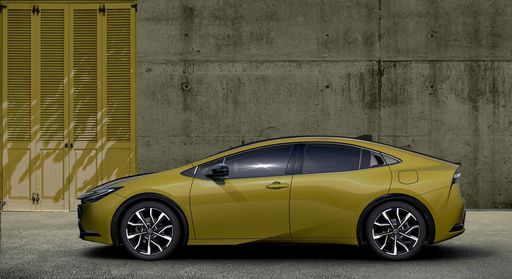
ADVERTISEMENT
ADVERTISEMENT
New Prius 5th generation Z grade exterior
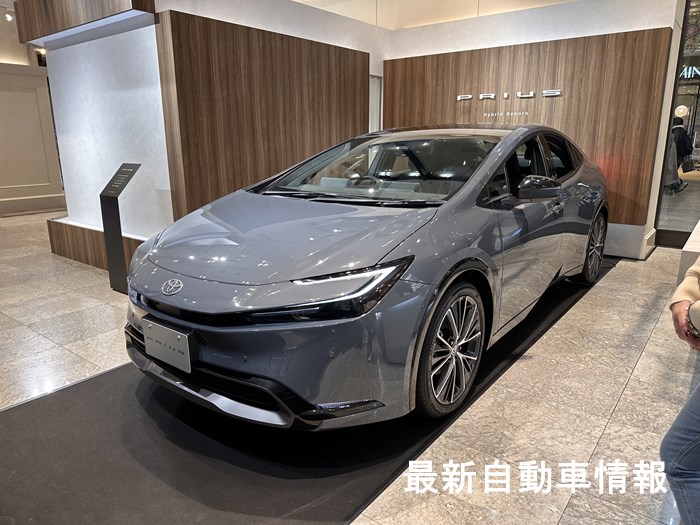

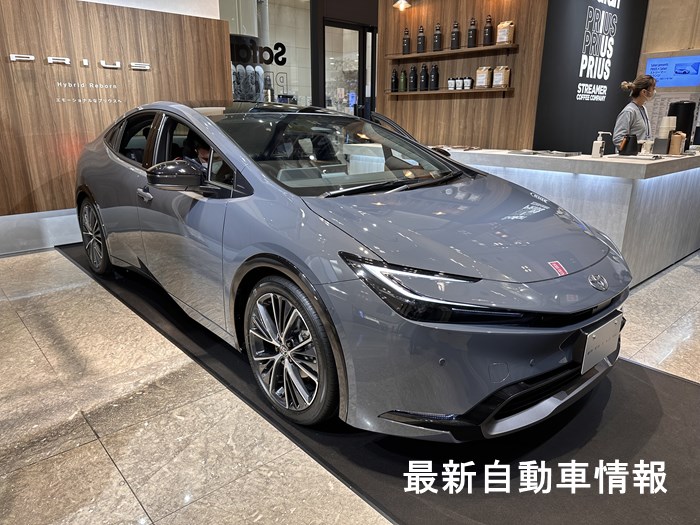
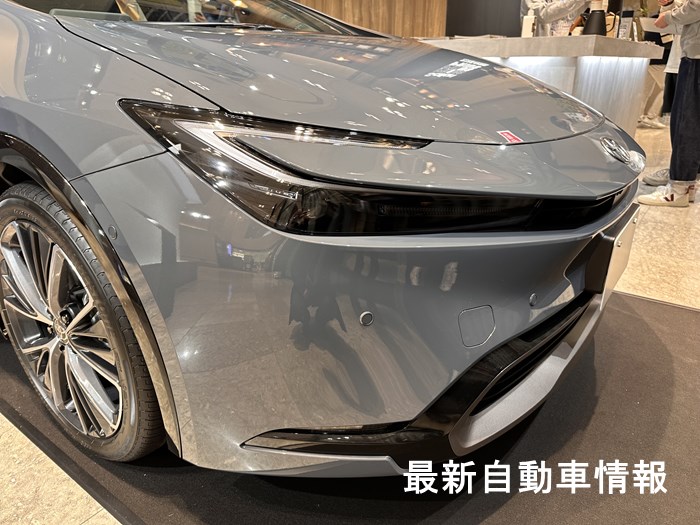
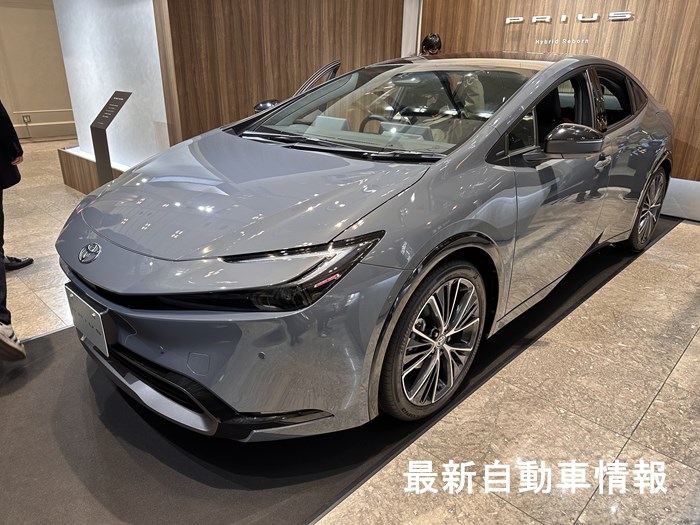

ADVERTISEMENT
ADVERTISEMENT
About the new Prius 5th generation body color (all 8 colors)
A total of 8 body colors are available. Two of the new colors are “Ash <1M2>” and “Mustard <5C5>”, which are solid color bases that give a sporty impression .
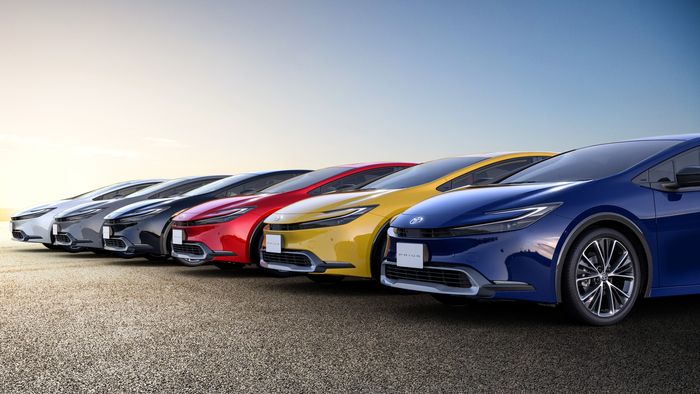
Ash <1M2>
Mustard <5C5>
Dark blue <8Q4>
Emotional Red II <3U5>
Platinum White Pearl Mica <089>
Attitude Black Mica <218>
Super White II <040>
Silver metallic <1L0>
About the new Prius 5th generation interior
The interior eliminates the center meter and adopts a digital meter on the front . In line with the trend of Toyota vehicles such as the new MIRAI, new Crown, and Harrier, the instrument panel area may be changed to a more user-friendly specification by changing the air conditioner vents and positioning the navigation display upwards. expensive. Adopts ” 8-inch or 12.3-inch display audio .” In addition, an “electric parking brake and hold” is adopted. “Digital interior mirror (with front and rear recording function)” Displays images from a camera installed at the rear of the vehicle on the rearview mirror. It also has a recording function. The “island architecture” concept provides a spacious space that does not feel oppressive and a cockpit that makes it easy to concentrate on driving. The interior space allows for intuitive operation and an enjoyable driving experience.
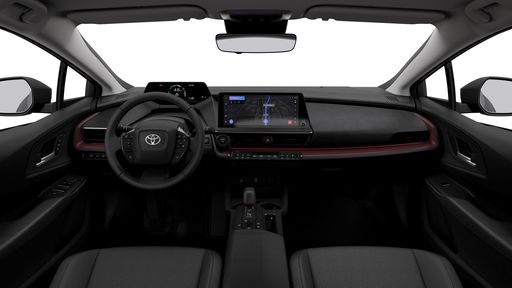
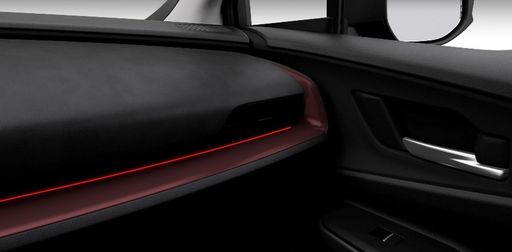
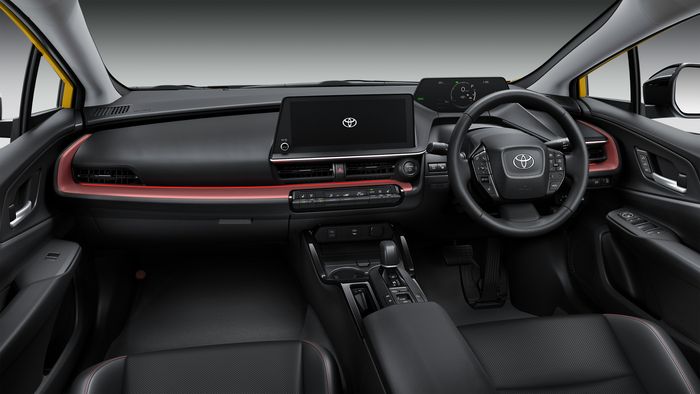
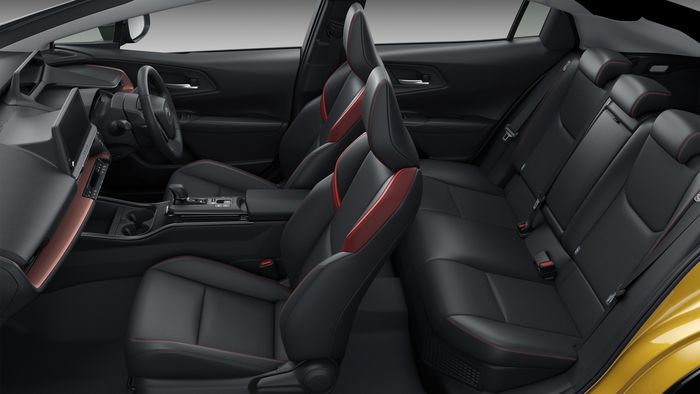
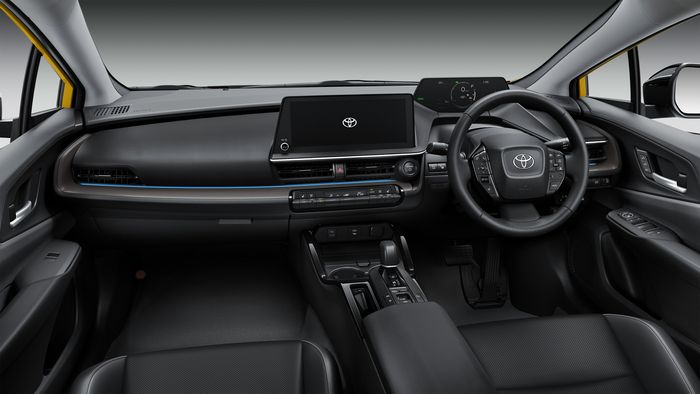
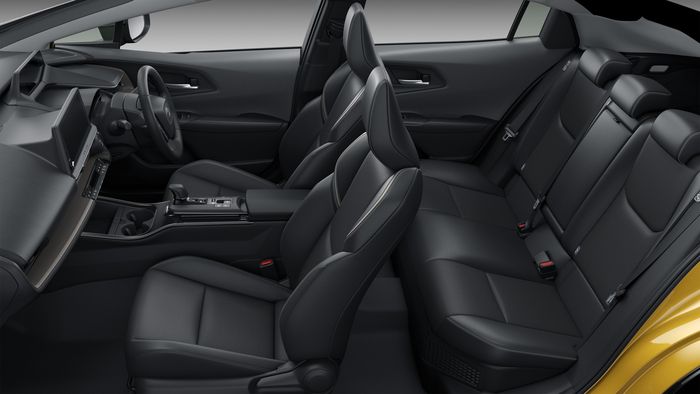
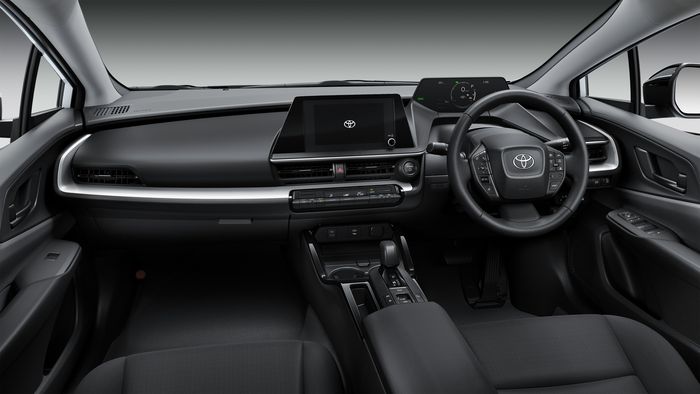

ADVERTISEMENT
ADVERTISEMENT
New Prius 5th generation Z grade interior

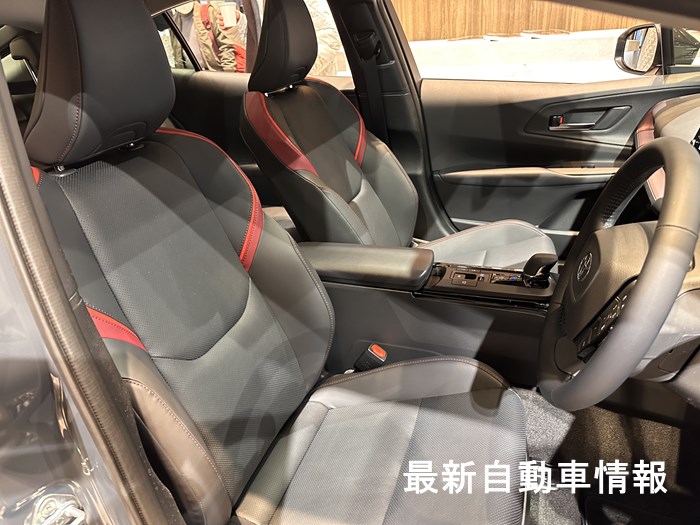

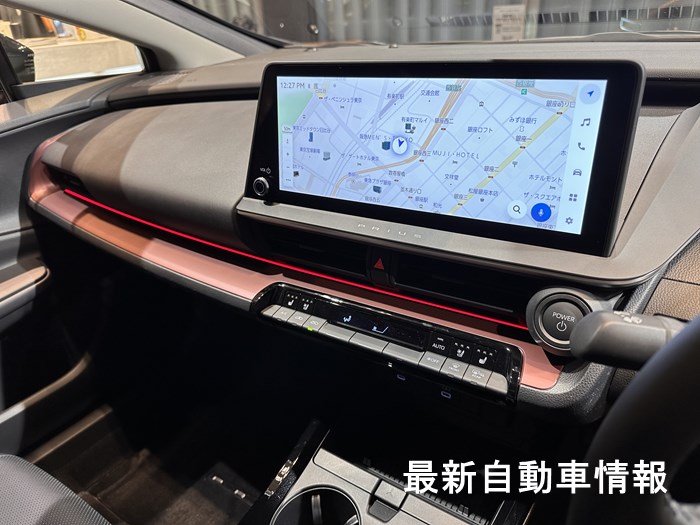
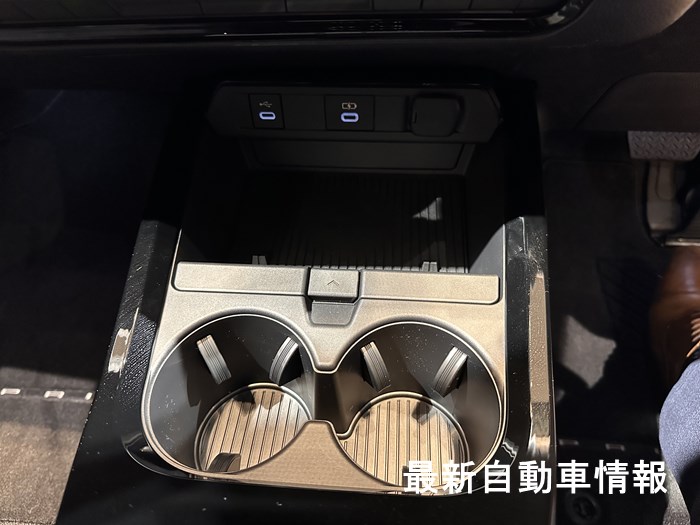

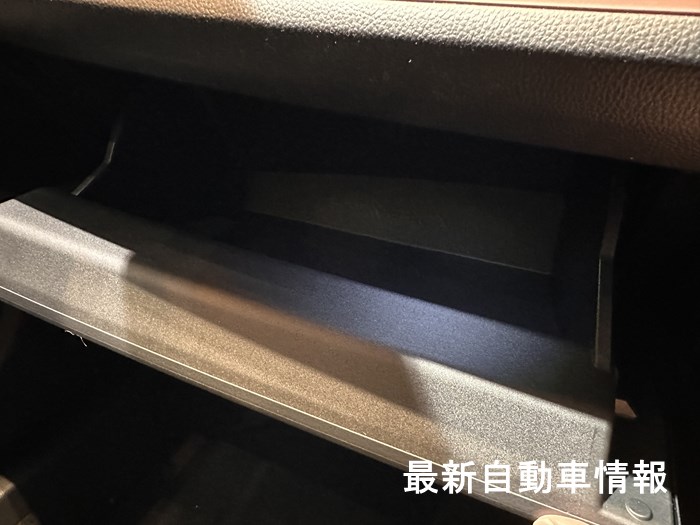
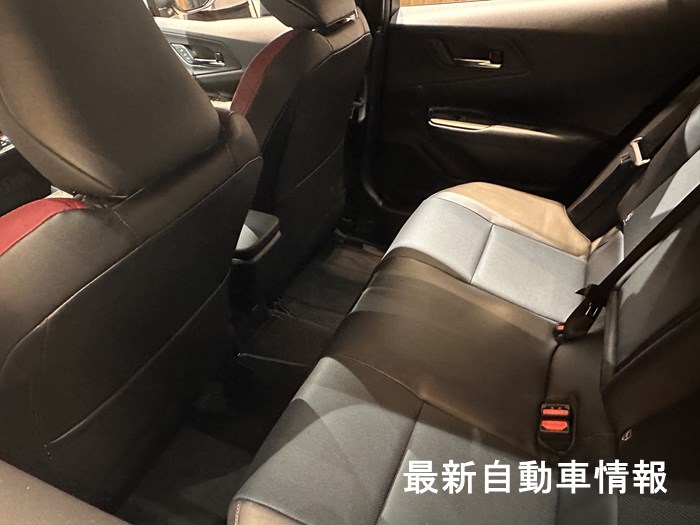

ADVERTISEMENT
ADVERTISEMENT
New Prius 5th generation installed engine
The lineup includes two hybrid systems: 1.8L straight-4 DOHC “2ZR-FXE” + motor model and 2.0L straight-4 DOHC “M20A-FXS” + motor model. Both the 2.0L and 1.8L models are equipped with the latest 5th generation hybrid system. The 1.8L model (U grade and The driving performance has also been refined, and in addition to the seamless acceleration that only a hybrid can offer, you can feel the lightness of your footing and the direct drive response. The 2.0L model (Z grade and G grade) achieves higher fuel efficiency (28.6km/L) than the previous model, while achieving a maximum system output of 144kW (196PS), 1.6 times that of the previous model.

ADVERTISEMENT
ADVERTISEMENT
1.8L straight 4 DOHC + motor model
The straight-4 DOHC 1.8L+ motor (series parallel hybrid with reduction mechanism) model has a significantly stronger front motor and rear motor than the 4th generation Prius, and the front motor has a maximum output of 53kW (72ps) → 70kW ( 95PS), maximum torque 163Nm (16.6kgm) → 185Nm (18.9kgfm), rear motor maximum output 5.3kW (7.2ps) → 30kW (41PS), maximum torque 55Nm (5.6kgm) → 84Nm (8.6kgfm), system output 90kW (122ps) → 103kW (140ps) .
2.0L straight 4 DOHC + motor model
The biggest change this time is the adoption of a straight-4 DOHC 2.0L+ motor (series parallel hybrid with reduction mechanism), which uses a high-output engine and motor, contributing to driving performance and fuel efficiency. Maximum system output is 144kW (193PS), 1.6 times that of the previous model, ensuring power performance befitting the sporty Prius.
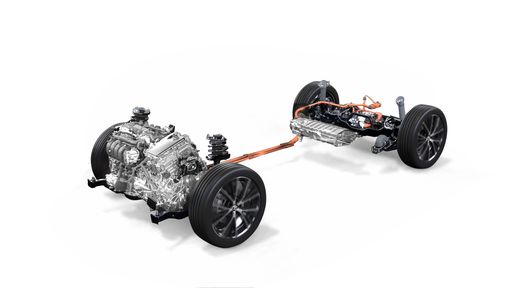
Hybrid system (2.0L prototype)
| spec | New Prius 1.8L (X/U) |
New Prius 2.0L (G/Z) |
|---|---|---|
| full length | 4,600mm | 4,600mm |
| full width | 1,780mm | 1,780mm |
| Overall height | 1,430mm | 1,420mm |
| Wheelbase | 2,750mm | 2,750mm |
| engine | Straight 4 DOHC 1.8L+ motor ( series parallel hybrid with reduction mechanism) |
Straight 4 DOHC 2.0L+ motor ( series parallel hybrid with reduction mechanism) |
| Maximum output | 72kW (98ps) / 5,200rpm |
112kW (152ps) |
| Maximum torque | 142Nm (14.5kgm) / 3,600rpm |
188Nm (19.2kgm) / 4,400-5,200rpm |
| Front motor maximum output |
70kW (95PS) |
83kW (113PS) |
| Front motor maximum torque |
185Nm (18.9kgfm) |
206Nm (21.0kgfm) |
| Rear motor maximum output |
30kW (41PS) |
30kW (41PS) |
| Rear motor maximum torque |
84Nm (8.6kgfm) |
84Nm (8.6kgfm) |
| system output | 103kW (140ps) |
144kW (190PS) |
| 0-100km/h acceleration | 9.3 seconds | 7.5 seconds |
| WLTC mode fuel consumption | 32.6km/L | 28.6km/L |
About the new Prius 5th generation next generation Toyota Safety Sense
The second generation “Next Generation Toyota Safety Sense” will be installed as standard on all models. “Pre-crash safety,” which can now detect bicycles during the day and pedestrians at night, and “radar cruise control,” which maintains a constant distance from the vehicle in front, assists with the steering operations necessary to maintain a lane. Equipped with Lane Tracing Assist (LTA). A function to detect bicycle drivers during the day and pedestrians at night has been added to Pre-Crash Safety. Excellent recognition performance and reliability are ensured using millimeter wave radar and cameras. In addition to three types of active safety functions: collision avoidance support type PCS, LDA, and AHB, a pedestrian detection function is added to the PCS. It enables pedestrian collision avoidance support and damage mitigation, and is also equipped with radar cruise control.
Compatible with the latest “collision avoidance support type pre-crash safety”, “detection at intersections”, “low speed acceleration suppression function” and “emergency steering avoidance support function”. Pre-crash safety (PCS) with pedestrian detection function uses millimeter-wave radar and cameras to detect vehicles and pedestrians ahead, and uses warnings, brake assist, and automatic braking to assist in collision avoidance and reduce damage. Automatic braking operates in the speed range of 10 to 80 km/h for pedestrians. For example, if the speed difference between you and the pedestrian is 30 km/h, the automatic brake will decelerate by approximately 30 km/h and assist in collision avoidance. . Additionally, it operates over a wide range of speeds from 10km/h to the maximum speed.For example, if the speed of your own vehicle is 40km/h compared to a stationary vehicle, it can decelerate the vehicle by approximately 40km/h. Furthermore, “Low speed acceleration suppression function”, “Detection of oncoming vehicles and pedestrians when turning right at an intersection”, and “Emergency steering avoidance support function” have been added.
- At low speeds, the low speed acceleration suppression function detects pedestrians, cyclists, and vehicles directly in front of the vehicle and suppresses acceleration.
- It can also detect oncoming vehicles when turning right at an intersection, as well as pedestrians crossing from the opposite direction when turning left or right.
- An emergency steering avoidance support function that assists steering in response to the driver’s avoidance steering during an emergency.
Road Sign Assist (RSA) has expanded the range of detection targets, and also reads major traffic signs on the side of the road, such as “Speed Limit,” “Stop,” “No Entry,” and “No Extending,” and displays them on the instrument panel.
A Lane Departure Alert (LDA) camera recognizes white and yellow lines in the driving lane, and if a possibility of lane departure is detected, a buzzer and display alert the driver to avoid collisions caused by lane departure. support.
An automatic high beam (AHB) camera detects the headlights of an oncoming vehicle or the taillights of a vehicle in front, and automatically switches between high and low beams to reduce dazzling to drivers of other vehicles and ensure forward visibility at night. support.
Radar cruise control Radar cruise control uses millimeter-wave radar to detect the distance between the vehicle in front and the vehicle in front, and adjusts the speed to match the speed of the vehicle in front within a set vehicle speed, allowing the vehicle to follow the vehicle while maintaining a constant distance. Adopted. Lane changes by the vehicle in front are detected using millimeter wave radar and cameras, achieving smoother acceleration and deceleration control. Aiming for “zero traffic accident casualties”, which is the ultimate wish of a mobility society, Toyota researches and develops various safety equipment and systems based on the “Integrated Safety Concept,” and is committed to “developing safer vehicles and technology.” At the same time, we are strengthening a wide range of initiatives for traffic safety through “participation in improving the traffic environment” and “traffic safety awareness activities for people.”
Lane Tracing Assist (LTA) Lexus Lane Tracing Assist [LTA] installed in the new LS series is adopted for the first time in the next generation Toyota Safety Sense P. When driving on a highway or expressway, turning on the Lane Tracing Assist (LTA) switch when the radar cruise control is activated will provide steering assistance necessary for lane maintenance.
Proactive Driving Assist: By anticipating risks depending on the driving situation, such as pedestrians crossing or pedestrians who may jump out, the system supports driving operations to avoid getting too close to danger, giving the driver peace of mind. . Furthermore, by supporting deceleration operations in response to preceding vehicles and curves in front, and by reducing the need for frequent pedal depressing operations, the system provides gentle support to the driver in driving situations such as on general roads.
Rear vehicle approach notification (first for Toyota brand) The blind spot monitor’s rear millimeter-wave radar detects the following vehicle, and if it approaches, the multi-information display or buzzer notifies you.
Support when surrounding vehicles approach (recording function/report suggestion function) First adopted under the Toyota brand When a vehicle from behind approaches the vehicle, the system suggests connecting the driver to the police or Helpnet. Additionally, if a drive recorder is installed, it will not only automatically record the situation, but will also save the data in a dedicated recording area, making it less likely to be overwritten.
Secondary collision brake (responsive to rear-end collisions while stationary) First adopted by the Toyota brand When the vehicle is stationary, the rear side millimeter-wave radar of the blind spot monitor detects the vehicle behind, and the system determines that there is a high possibility of being rear-ended. The system then activates the vehicle’s brakes to reduce the speed of the vehicle in the event of a subsequent rear-end collision. By applying the brakes before a collision, it is possible to decelerate earlier than before.
advanced safety
Intelligent Clearance Sonar (Stationary Parking Support Brake) A system that helps reduce damage by mitigating collisions caused by pressing the accelerator incorrectly or pressing too hard. A function has been added to the Clearance Sonar, which uses a display and a buzzer to alert you when you are approaching a stationary object when driving, such as when parking in a garage. Sonar also detects windows such as convenience stores. When driving at low speeds (15 km/h or less), if a stationary object is detected in the direction of travel, the hybrid system output is suppressed and the brakes are automatically applied when the distance further decreases.
Leading vehicle departure notification function If you stop following a vehicle in front while waiting at a traffic light or in traffic jams, and remain there without noticing that the vehicle in front has started, you will be notified with a buzzer and a display.
Emergency brake signal (hazard lamp flashing type) When you apply sudden brakes, the hazard lamp flashes automatically.
Lane Tracing Assist [LTA] system for responding to driver abnormalities . If the driver remains inactive during control, the system prompts the driver to take action with audible, visual and slow deceleration warnings, and warns the driver of abnormalities outside the vehicle with a hazard and horn. The vehicle decelerates and stops within its own lane while alerting the driver, helping to avoid accidents that cause injury or damage to the vehicle, and reduce accident damage.
Digital interior mirror Images from a camera attached to the rear of the vehicle are displayed on the rearview mirror.
Advanced Park Remote function allows you to back up to the target parking position confirmed on the screen or exit from parallel parking by using the screen display, voice and buzzer to guide you, and by controlling the steering wheel, shift position, accelerator and brakes. assist. Additionally, a dedicated smartphone app is available, allowing you to park remotely from outside the vehicle.
Panoramic View Monitor (360° Monitor) This allows you to see areas that are difficult to reach, such as diagonally behind or directly to the side of the car, allowing you to quickly spot obstacles.
Blind Spot Monitor (BSM) Radar detects vehicles running in adjacent lanes. When the vehicle enters the blind spot area, an LED indicator mounted on the door mirror lights up.
Safe Exit Assist (SEA) When exiting the vehicle, the Blind Spot Monitor [BSM] sensor is used to detect approaching vehicles, including bicycles, from behind. If the system determines that there is a possibility of collision with the opened door or a passenger who has exited the vehicle, an indicator in the door mirror lights up to alert the driver.
Rear Cross Traffic Auto Brake Detects blind spots when reversing and alerts you. If there is a risk of collision, the system automatically applies brake control to help reduce damage from collisions with approaching vehicles.
Remote Start (App) A new optional service that allows you to start the engine and start the air conditioner from the MyTOYOTA app.
2nd generation next generation Toyota Safety Sense feature comparison
| System equipment | 4th generation Prius |
5th generation new Prius |
|
|---|---|---|---|
| Toyota Safety Sense |
Collision avoidance support type pre-crash safety |
◯ Daytime pedestrian |
◯ Day and night pedestrians, bicycles, and motorcycles |
| proactive driving assist |
– | ◯ | |
| Lane departure alert ( with steering control function) |
◯ Steering control white line/yellow line detection wobbling alarm |
◯ Steering control white line/yellow line detection road edge detection sway alarm |
|
| adaptive high beam system |
◯ | ◯ | |
| Radar cruise control (with all vehicle speed tracking function) |
◯ | ◯ | |
| lane tracing assist |
– | ◯ | |
| Road sign assist traffic sign reading |
– | ◯ | |
| Leading vehicle departure announcement | – | ◯ | |
| preventive safety equipment |
blind spot monitor |
◯ | ◯ |
| intelligent clearance sonar |
◯ | ◯ | |
|
Rear cross traffic |
◯ | ◯ | |
| Advanced Park with remote function |
– | ◯ | |
| Safe Exit Assist (SEA) | – | ◯ | |
| Driver abnormality response system |
– | ◯ | |
| hill start assist control |
◯ | ◯ | |
| panoramic view monitor |
– | ◯ | |
| Comfortable equipment |
Comfortable heated seat + seat ventilation |
◯ | ◯ |
| steering heater | – | ◯ | |
| Digital inner mirror (with front and rear recording function) |
– | ◯ | |
| ITS Connect | ◯ | ◯ | |
| Electric parking brake & hold |
– | ◯ | |
| power seat | ◯ | ◯ | |
| hands free power backdoor |
– | ◯ | |
| heads up display |
◯ | ◯ | |
| digital key | – | ◯ | |
| Naviless | ◯ | – | |
| toyota display audio |
– | ◯ * Excluding base grade X |
|
| In-vehicle communication device (DCM) | – | ◯ | |
Toyota 2nd generation version Toyota Safety Sense introduced from 2018 Comparison Changes
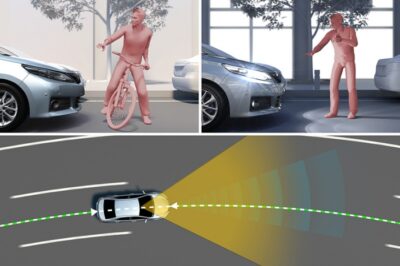
New Prius 5th generation price grade
We launched ” KINTO Unlimited ” today as a new car subscription service , starting with the new Prius “U grade” (exclusive to ” KINTO Unlimited “).
| grade | engine | transmission |
Drive system |
Price (10%) |
|---|---|---|---|---|
| X | Inline 4-cylinder 1.8L engine + motor |
Electric continuously variable transmission |
2WD | 2,750,000 yen |
| X E-Four | 4WD (E-Four) |
2,970,000 yen | ||
| U | 2WD | 2,999,000 yen | ||
| U E-Four | 4WD (E-Four) |
3,210,000 yen | ||
| G | Inline 4-cylinder 2.0L engine + motor |
2WD | 3,200,000 yen | |
| G E-Four | 4WD (E-Four) |
3,420,000 yen | ||
| Z | 2WD | 3,700,000 yen | ||
| Z E-Four | 4WD (E-Four) |
3,920,000 yen |

What I think about the new Prius 5th generation
The Prius is the world’s first mass-produced hybrid vehicle, launched by Toyota in 1997, and has always been packed with Toyota’s latest technology. The 5th generation also features excellent equipment for this class, including the latest “hybrid system” and “safety equipment.” By adopting two hybrid systems and having a 2.0L displacement model in the lineup, it will be a model that combines not only fuel efficiency but also comfort. However, times have changed and until the 4th generation, the only car model that adopted Toyota’s “hybrid system” was the “Prius,” but now many “Toyota vehicles” use the same “hybrid system.” Although it is true that the number of people choosing the Prius has decreased due to the market, we are looking forward to seeing how much sales will increase once it goes on sale.
About the 4th generation Prius 50 series first half
The 4th generation Prius went on sale on December 9, 2015. By adopting the newly developed GA-C platform called TNGA (Toyota New Global Architecture) for the first time (the first car) , it has a more spacious interior than the previous model.
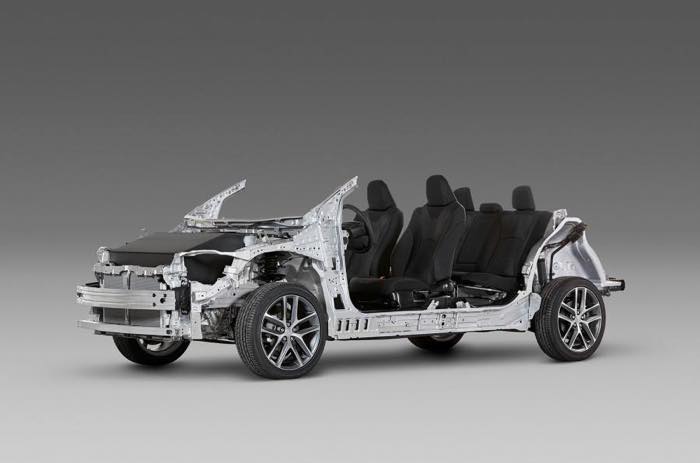
TNGA (Toyota New Global Architecture)
4th generation Prius 50 series First adoption of early TNGA (Toyota New Global Architecture)
TNGA will dramatically improve the basic performance and product appeal of the car by renewing the powertrain unit and platform and developing them in an integrated manner. The new platform features a redesigned and newly developed underbody and suspension, as well as a lower center of gravity and lower placement of the powertrain unit, resulting in the lowest center of gravity in its class. It contributes to a low-slung, cool design, comfortable handling, a high-quality ride, and collision safety performance that delivers safety and security. Body rigidity will be improved (30 to 65% higher than conventional models) by reviewing the skeletal structure, and body rigidity will be further increased by adopting laser welding technology to join the body. By improving the thermal efficiency of the engine and the transmission efficiency of the transmission, the overall powertrain system (engine and transmission) has improved fuel efficiency by approximately 25% and power performance by approximately 15% or more.
About the hybrid system of the 4th generation Prius 50 series early model
Furthermore, the smaller THS II hybrid system (the entire system including the engine) is expected to improve fuel efficiency by more than 15% by reviewing the layout of the drive unit and making the motor, inverter, and battery smaller and more efficient. Equipped with an improved in-line 4-cylinder DOHC 1.8L engine “2ZR-FXE” that achieves a maximum thermal efficiency of 40%.The entire system has achieved approximately 20% lower loss. The “E” achieves low fuel consumption of 40.8km/L in JC08 mode.

Improved in-line 4-cylinder DOHC 1.8L engine “2ZR-FXE”
About the size of the 4th generation Prius 50 series first half
Overall length: 4,540mm (+60mm), Overall width: 1,760mm (+15mm), Overall height: 1,470mm (-20mm), Wheelbase: 2,700mm (0mm), with a low center of gravity body with a nose that is -70mm lower than the third generation. Reborn. The “ultimate aerodynamic form” eliminates air resistance.The door mirrors and shark antenna are designed with aerodynamic performance in mind.
The position of the Toyota mark is about the same height as the 86.The “ultimate aerodynamic form” eliminates air resistance compared to the old model.LEDs are used for all lights. Furthermore, wind noise has been reduced by adopting a seamless design for the door handles. The 17-inch aluminum wheels utilize an innovative method of incorporating resin decorative parts into aluminum to improve aerodynamic performance and reduce weight. (The 15-inch model is in the hubcap) By placing the battery under the rear seat instead of under the trunk, the floor has been lowered and the trunk space has increased luggage capacity by 56L compared to the old model. You can even fit 4 golf bags in the trunk! ! (The third generation model accommodates approximately 3 golf bags) The trunk capacity has been expanded from the previous 446L to 502L. (LED front fog lamp, LED side turn light, LED high mount stop lamp, LED license plate lamp) The headlight unit uses a Bi-Beam LED headlight with a single eye that uses high beam and low beam. Adopts a 4.2-inch color TFT twin meter that is multi-functional and easy to use and read.

Old model 4th generation Prius meter
The right side displays basic information such as speed and fuel gauge. The left side has a “multi-display” that can be switched using the steering wheel switch, expressing functionality and innovation. Following the Land Cruiser 200, which underwent minor changes in August 2015, it is equipped with the advanced safety technology Toyota Safety Sense P.
4th generation Prius 50 series early model 9 colors in total
- Emotional Red (3T7) ( Touring Selection Limited )
- Thermotect Lime Green (6W7) (manufacturer option)
- Steel Blonde Metallic (4X1)
- Gray metallic (1G3)
- Attitude Black Mica (218)
- Dark blue mica metallic (8W7)
- Super White II (040)
- White Pearl Crystal Shine (070) (manufacturer option)
- Silver metallic (1F7)
This new Prius not only has improved design and fuel efficiency, but also has the latest technology applied to its paint . A newly developed color for the new Prius. Emotional Red is a special color that uses Toyota’s first new technology to achieve a bright red without any cloudiness. Thermotect Lime Green is the world’s first technology to provide heat insulation , and the body color has also been newly developed using completely new technology. Steel Blonde Metallic has also been newly developed for the new Prius, which gives it an advanced and premium impression.
interior color
cool gray
black
There are two interior colors.
sheet
Genuine Leather
Synthetic leather
advanced fabric
fabric
You can choose from four seats.
Steering front console tray
white decoration
black
4th generation Prius 50 series early price grade
| grade | price |
|---|---|
| S | 2,479,091 yen |
| S E-Four | 2,673,491 yen |
| S Touring | 2,628,327 yen |
| S Touring E-Four | 2,822,727 yen |
| A | 2,777,563 yen |
| A E-Four | 2,971,963 yen |
| A-touring | 2,926,800 yen |
| A Touring E-Four | 3,121,200 yen |
| A Premium | 3,107,455 yen |
| A Premium E-Four | 3,301,855 yen |
| A Premium Touring | 3,199,745 yen |
| A Premium Touring E-Four | 3,394,145 yen |
Tax benefits for 50-inch Prius
Income tax (approximately 60,700 to 84,850 yen (depending on grade)) and weight tax (approximately 36,900 yen) are reduced by 100% for eco-friendly vehicles, vehicles that comply with the promotion tax system and the automobile green tax system. You can receive a 75% reduction in automobile tax in the year following your new car registration. (approx. 29,500 yen)
4th generation Prius 50 series first half November 2017 partially improved
The new Prius underwent some improvements in November 2017. With this partial improvement, the exterior will be available in two-tone colors, like the new C-HR, and the color variations will be increased to two-tone black or white.
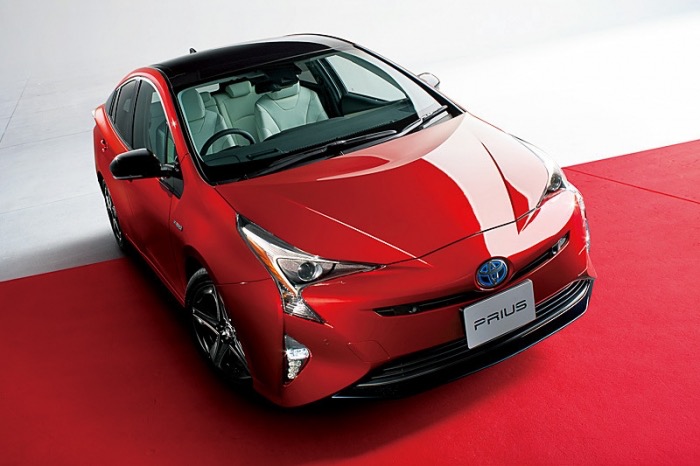
Special edition car A Premium “Touring Selection/20th Anniversary Limited”
As part of the interior improvements, the 11.6-inch large-screen navigation (display) installed in the new Prius PHV will be available as a manufacturer option. Also includes T-Connect DCM package. The white color of the console box, which has been unpopular for some time, has been changed to black as standard. Adopts a front console tray with piano black decoration. Changed so that auto cruise is displayed on the head-up display installed on upper grades. Sales of the first generation began in December 1997, and to commemorate the 20th anniversary since then, we are launching a “20th Anniversary Special Edition” model.
4th generation Prius minor change model 50 series late model
Toyota has made minor changes to the new Prius and will release it in Japan on December 17, 2018. Sold at Toyota stores, Toyopet stores, Toyota Corolla stores, and Netz stores nationwide . Monthly sales target: 6,600 units. Price: 2,518,560 yen to 3,478,680 yen.
4th generation Prius minor change model 50 series late exterior changes
Front and rear bumper design changes. The overall length of the first half was changed from 4,540mm to 4,575mm for the second half. Adopts redesigned Bi-Beam LED headlights (retarded headlights) . Changed tail lamp design. The 17-inch aluminum wheels use a titanium-like paint on the resin decoration, and the 15-inch aluminum wheels use a twin-spoke shape. New body colors include Blue Metallic and Emotional Red 2 . The “Geometric Roof Film” is available as an option, which creates a two-tone body finish by painting the roof with a geometric film with delicate irregularities, and the door mirrors and roof antenna are also painted black.
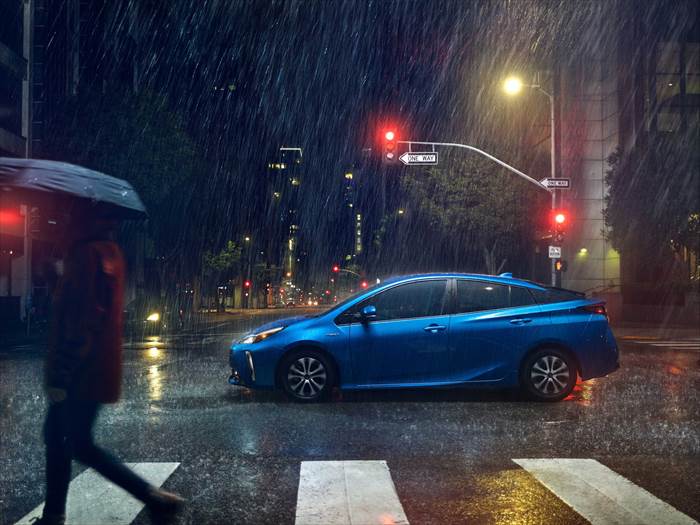
TOYOTA prius North American model exterior
4th generation Prius minor change model 50 series late interior changes
The interior uses LED for interior lighting. The interior color was changed from white around the steering wheel, shift lever, and center console tray set to black. Charging is an option when placed in “A”, “A Premium”, and “A Premium ‘Touring Selection'” . Expand space. The seat heater switch has been relocated and placed in the center console tray for improved usability. Seat ventilation function has been added to the front seats of “A Premium” and “A Premium ‘Touring Selection'” . (Improve comfort during summer when cold air is sucked in from the seat.)
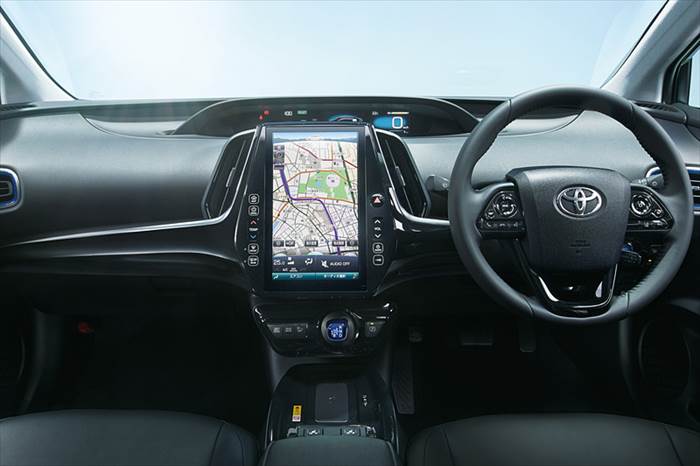
TOYOTA Prius minor change interior
Some improvements were made to the interior in November 2017, and the 11.6-inch large screen navigation (display) installed in the new Prius PHV can now be selected as a manufacturer option, and a dedicated communication device DCM is installed as standard on all models . T-Connect service is provided free of charge for 3 years.

50 series early Prius interior
4th generation Prius minor change model 50 series late grade price information
| grade | price | Previous period comparison price |
|---|---|---|
| E | 2,518,560 yen | +89,542 yen |
| S | 2,565,000 yen | +85,909 yen |
| S E-Four | 2,759,400 yen | +85,909 yen |
| S Touring | 2,732,400 yen | +104,073 yen |
| S Touring E-Four | 2,926,800 yen | +104,073 yen |
| A | 2,842,560 yen | +64,997 yen |
| A E-Four | 3,036,960 yen | +64,997 yen |
| A-touring | 3,006,720 yen | +79,920 yen |
| A Touring E-Four | 3,201,120 yen | +79,920 yen |
| A Premium | 3,175,200 yen | +67,745 yen |
| A Premium E-Four | 3,369,600 yen | +67,745 yen |
| A Premium Touring | 3,284,280 yen | +84,535 yen |
| A Premium Touring E-Four | 3,478,680 yen | +84,535 yen |
Prices for each grade are approximately 65,000 yen to 90,000 yen higher than the old model. A and A Premium are likely to be the most economical grades since they have the least difference in price .
4th generation Prius minor change model 50 series late specs
| spec | new prius |
|---|---|
| full length | 4,575mm |
| full width | 1,760mm |
| Overall height | 1,470mm |
| Wheelbase | 2,700mm |
| engine | Straight 4 DOHC 1.8L+ motor (THSⅡ) |
| Maximum output | 72kW (98ps)/5,200rpm |
| Maximum torque | 142Nm (14.5kgm)/3,600rpm |
| Front motor maximum output | 53kW (72ps) |
| Front motor maximum torque | 163Nm (16.6kgm) |
| Rear motor maximum output | 5.3kW (7.2ps) |
| Rear motor maximum torque | 55Nm (5.6kgm) |
| system output | 90kW (122ps) |
| transmission | continuously variable transmission |
| vehicle weight | 1,320~1,460kg |
| Riding capacity | Five people |
| JC08 mode fuel efficiency | 37.2~39.0km/L |
| WLTC mode fuel consumption | 27.2~32.1km/L (2WD) 25.4~28.3km/L (4WD) |
| price | 2,518,560 yen ~ 3,478,680 yen |
We will notify you as soon as new information becomes available.
toyota news release
https://global.toyota/jp/newsroom/toyota/25674138.html
toyota prius
Toyota
